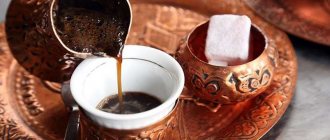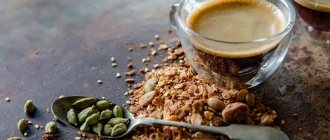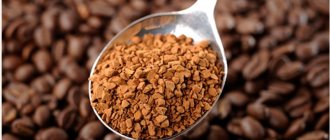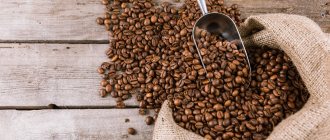The taste and strength of coffee depends on the recipe, and that, in turn, largely relies on proportions - how much powder and water is needed per cup. Often the instruction is 1 or 2 teaspoons. But everyone’s dishes are different, and they can be filled differently - with or without a slide. Therefore, the question of how much ground coffee is needed for 1 cup of 200 ml remains relevant. And for lovers of an aromatic drink, it is necessary to understand the optimal proportions for preparation in a Turk, in a coffee maker, or in a French press.
What is the price of a cup of coffee?
The price of a cup of coffee consists of cost and trade margin. If it's espresso, the cost includes coffee, water and sugar. If it’s a cappuccino or latte, add milk and syrup. For takeaway coffee, the cost includes a disposable cup, a lid and a stirrer.
The trade margin is the cost of everything else that is needed to make that very cup of coffee. This includes the barista’s salary, coffee machine maintenance, and a roof over your head (or at least over the coffee machine). And, of course, it also includes the profit that the business owner will receive.
Now let’s take a closer look at what is included in the first and second, and why the price of a cup in a street coffee shop is so strikingly different from the price in a fashionable establishment. Spoiler: not only because their rent is more expensive.
Cooking accessories
Special devices are not required, but greatly simplify the process. In first place is an equipped coffee machine. It allows you to make cappuccino as quickly as possible. If you don't have one, you'll need a coffee maker or a Turk.
There are several ways to froth milk:
- manual cappuccino maker;
- mixer;
- shaker;
- jar with lid;
- French press;
- whisk;
- with a fork.
It is advisable to have a special milk jug - a pinscher, but you can get by with any container with high walls. Plastic stencils and topping devices are often used for decoration. You may also need spoons, straws, toothpicks, and glasses as auxiliary ones. Cappuccino is served in a large cup or Irish glass, the main thing is that there is enough milk foam to fill the container to the brim.
This is one of the most popular coffee drinks with milk. Following simple preparation recommendations will allow you to get cappuccino with dense, stable foam. Additional flavoring and aromatic additives completely change the organoleptic properties. Thanks to the different ingredients, it is possible to prepare several different-tasting products from one. Latte art allows you to shape milk foam or apply a beautiful pattern to it.
How much does grain and roasting cost?
The cost of a cup of espresso is on average 30% of the selling price. Its main component is grain. It comes in different classes and qualities.
Alexander Panagushin, brand barista of the Pick Cup coffee shop chain
“Establishments like One Love Espresso Bar work with premium beans - Specialty, Cup of Excellence,” says Alexander Panagushin, coffee expert and brand barista of the Pick Cup coffee shop chain. — Specialty class grain costs $8-12 per kg. Scarce varieties are many times more expensive. For example, “Jamaica Blue Mountain” will cost $110 per kg.”
Outdoor coffee trucks usually use the cheapest Commercial grade beans, which cost up to $8. The cheapest variety, Brazil Santos, sells for $4 per kg.
The team at the small Gemini coffee shop selects and roasts exclusively Arabica beans from the Premium and Specialty segment. “We try to find unique coffee. For example, here you can try the very rare Colombia El Vampiro variety,” says Alexey Fedorovsky, chief roaster of Gemini espresso, champion of Ukraine Brewers Cup 2016.
The cost of a cup of coffee also includes the cost of roasting the beans. Roasting determines whether the coffee's flavor potential will be revealed. For example, the Pick Cup chain works with a specialist who charges about $1 to roast one kilogram of green beans.
Every day in our Telegram channel we publish selections of the main news of the day and key articles. The most interesting and important, short and clear, every day











